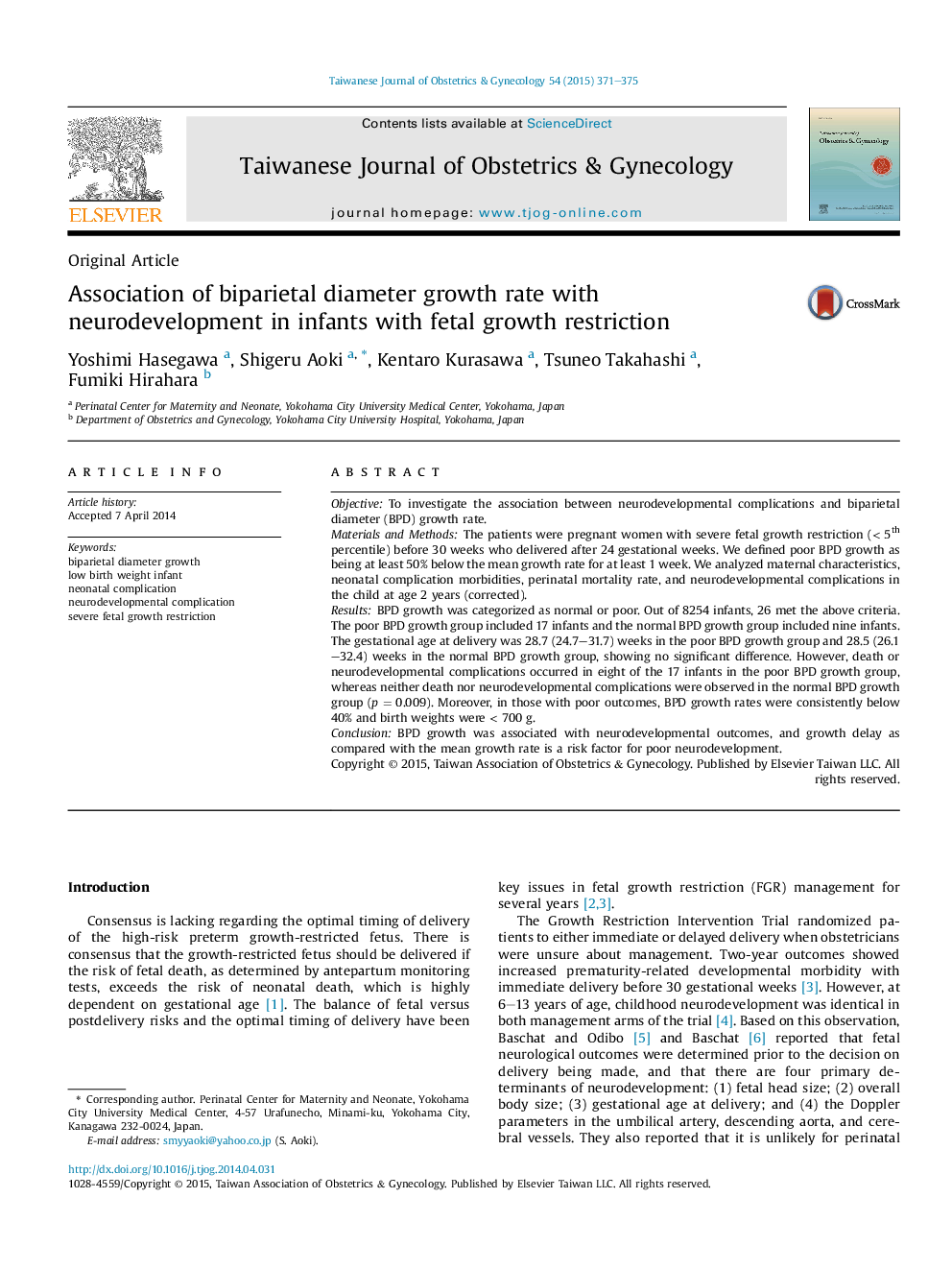| Article ID | Journal | Published Year | Pages | File Type |
|---|---|---|---|---|
| 3975050 | Taiwanese Journal of Obstetrics and Gynecology | 2015 | 5 Pages |
ObjectiveTo investigate the association between neurodevelopmental complications and biparietal diameter (BPD) growth rate.Materials and MethodsThe patients were pregnant women with severe fetal growth restriction (< 5th percentile) before 30 weeks who delivered after 24 gestational weeks. We defined poor BPD growth as being at least 50% below the mean growth rate for at least 1 week. We analyzed maternal characteristics, neonatal complication morbidities, perinatal mortality rate, and neurodevelopmental complications in the child at age 2 years (corrected).ResultsBPD growth was categorized as normal or poor. Out of 8254 infants, 26 met the above criteria. The poor BPD growth group included 17 infants and the normal BPD growth group included nine infants. The gestational age at delivery was 28.7 (24.7–31.7) weeks in the poor BPD growth group and 28.5 (26.1–32.4) weeks in the normal BPD growth group, showing no significant difference. However, death or neurodevelopmental complications occurred in eight of the 17 infants in the poor BPD growth group, whereas neither death nor neurodevelopmental complications were observed in the normal BPD growth group (p = 0.009). Moreover, in those with poor outcomes, BPD growth rates were consistently below 40% and birth weights were < 700 g.ConclusionBPD growth was associated with neurodevelopmental outcomes, and growth delay as compared with the mean growth rate is a risk factor for poor neurodevelopment.
